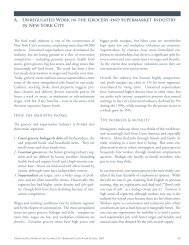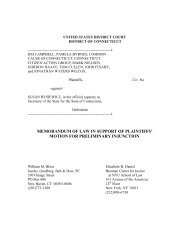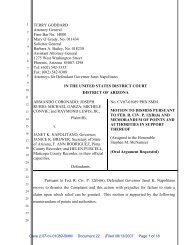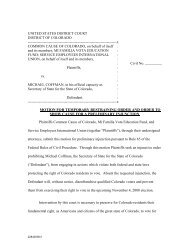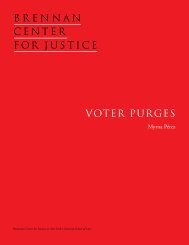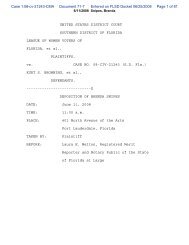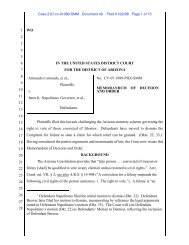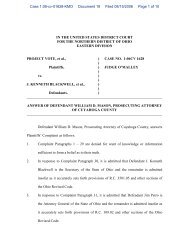1437 Bannock St . Denver , Colorado 80202 - Brennan Center for ...
1437 Bannock St . Denver , Colorado 80202 - Brennan Center for ...
1437 Bannock St . Denver , Colorado 80202 - Brennan Center for ...
Create successful ePaper yourself
Turn your PDF publications into a flip-book with our unique Google optimized e-Paper software.
Electors who are designated as “inactive failed to vote” become active if they timelyrespond to any of the a<strong>for</strong>ementioned notices, take any action to update their registration, or vote.Electors retain their status as “inactive-failed to vote” because they did not vote in the priorgeneral election and failed to heed repeated notifications of inactive status.Electors who are designated as “inactive-failed to vote” can vote in a mail ballot election.They can receive a mail ballot if they timely update their registration or they can vote in person.iii.The <strong>St</strong>atutory Language Supports the Conclusion that the Clerks May NotSend Mail Ballots To Electors Designated as “Inactive-failed to vote.”Clerk Johnson contends that the counties may, in their discretion, mail ballots to voterswho are categorized as “inactive-failed to vote.” (Clerk Johnson’s Answer, Affirmative Defense, 6; Clerk Johnson’s Response in Opposition to Motion <strong>for</strong> Preliminary Injunction, pp. 11-15;Common Cause Amended Answer and Counterclaim, 56-57; Clerk Johnson’s Motion <strong>for</strong>Summary Judgment, pp. 15-21)) The Secretary contends that the counties may not send mailballots to electors designated “inactive-failed to vote.”When construing a statute, the courts “af<strong>for</strong>d the words of the statute their ordinary andcommon meaning and construe the statutory provisions as a whole, giving effect to the entiretyof the statute.” Lombard v. <strong>Colorado</strong> Outdoor Education <strong>Center</strong>, Inc., 187 P.3d 565, 570 (Colo.2008). If the language is ambiguous or unclear, the courts will “consider the statute’s legislativehistory, the state of the law prior to the enactment, the problem addressed and the statutoryremedy.” Id. “When the legislature speaks with exactitude, [the court] must construe the statuteto mean that the inclusion or specification of a particular set of conditions necessarily excludesothers.” Luns<strong>for</strong>d v. Western <strong>St</strong>ates Life Insurance, 908 P. 2d 79, 84 (Colo. 1995).21



![Download the Letter [PDF] - Brennan Center for Justice](https://img.yumpu.com/50139248/1/190x245/download-the-letter-pdf-brennan-center-for-justice.jpg?quality=85)
